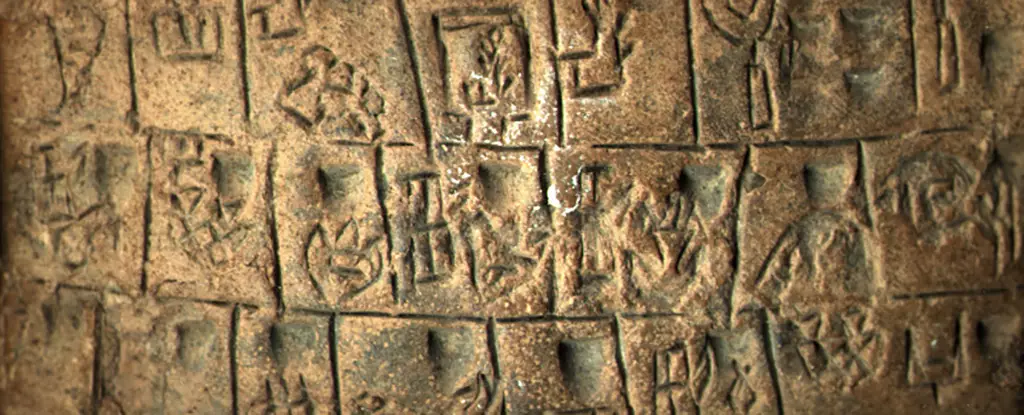The evolution of human communication has always fascinated scholars, particularly the transition from primitive symbols to complex writing systems. While humans have likely recorded their surroundings and emotions in some form for tens of thousands of years, establishing a clear timeline for when these marks evolved into structured writing remains elusive. Recent research from a team at the University of Bologna aims to shed light on this transformation by investigating the role of ancient Mesopotamian seals in the genesis of one of the earliest writing systems: proto-cuneiform.
Proto-cuneiform, hailing from the Mesopotamian region, represents an intriguing stage in the journey towards writing. Unlike modern alphabets, proto-cuneiform consists of symbols that convey concrete meanings but lack grammatical structure. Philologist Silvia Ferrara emphasizes that the previous research largely undervalued the critical relationship between visual communication and the development of written signs. This study probes the hypothesis that early seal imagery, which shared thematic and visual similarities with proto-cuneiform symbols, helped shape the writing system’s initial emergence.
The researchers’ systematic investigation involved analyzing various cylinder seals, ranging from the pre-writing era to what is termed the proto-literate period. The visual representations inscribed on these seals offer snapshots of a society that relied on tangible, recognizable symbols to communicate basic concepts, much like modern-day emojis that encapsulate ideas within simplistic images.
The significance of the imagery found on cylinder seals extends beyond artistic expression; these representations served functional purposes, embedding meaning within the culture. For instance, common motifs depicted on these seals, such as fringed textiles and various vessels, exhibit remarkable resemblances to earlier proto-cuneiform signs. By comparing the visual elements of the seals with proto-cuneiform symbols, the researchers identified patterns that suggest a direct lineage of conceptual development.
One striking example is the depiction of triangular symbols with vertical lines that signify woven material. Such forms have counterparts in the illustrations found on cylinder seals that portray individuals engaged in the act of weaving. This visual continuity indicates how tangible objects and activities informed abstract symbol systems, further bridging the divide between early representations and formalized writing.
The implications of this research extend far beyond linguistics; it provides critical insights into the cognitive leaps made by early civilizations. The advent of writing is seen as a pivotal moment in human history, marking the transition from prehistorical existence to recorded civilization. As Ferrara points out, proto-cuneiform was initially deployed for accounting purposes, particularly concerning trade and agriculture. This practical application of writing allowed for more sophisticated economic systems and ultimately facilitated the growth of cities and trade networks.
The research highlights not only how cylinder seals acted as precursors to writing but also reinforces the idea that visual art played an influential role in shaping human thought processes. The engraved designs were not merely decorative; they carried the weight of transactional communication, setting the ground for a system that could encapsulate complex ideas and narratives.
Implications for Cultural Understanding
Ultimately, the connection between ancient seals and proto-cuneiform underscores the importance of visual culture in the development of writing. By exploring these early forms of communication, we gain insights into how societies comprehended and interacted with their environments. The researchers from the University of Bologna have opened a new avenue of inquiry regarding the origins of writing, elucidating the intricate web of art and language that contributed to one of humanity’s most transformative innovations.
In examining the artifacts from ancient Mesopotamia, we are reminded of the enduring power of symbols and their ability to convey meaning across millennia. This study serves not only as a testament to human ingenuity but also as an invitation for further exploration of how visual communication has shaped our collective history. The evolution of writing is not simply a historical milestone; it is a reflection of our intrinsic desire to share knowledge, ideas, and cultural narratives—a journey that continues to this day.


Leave a Reply